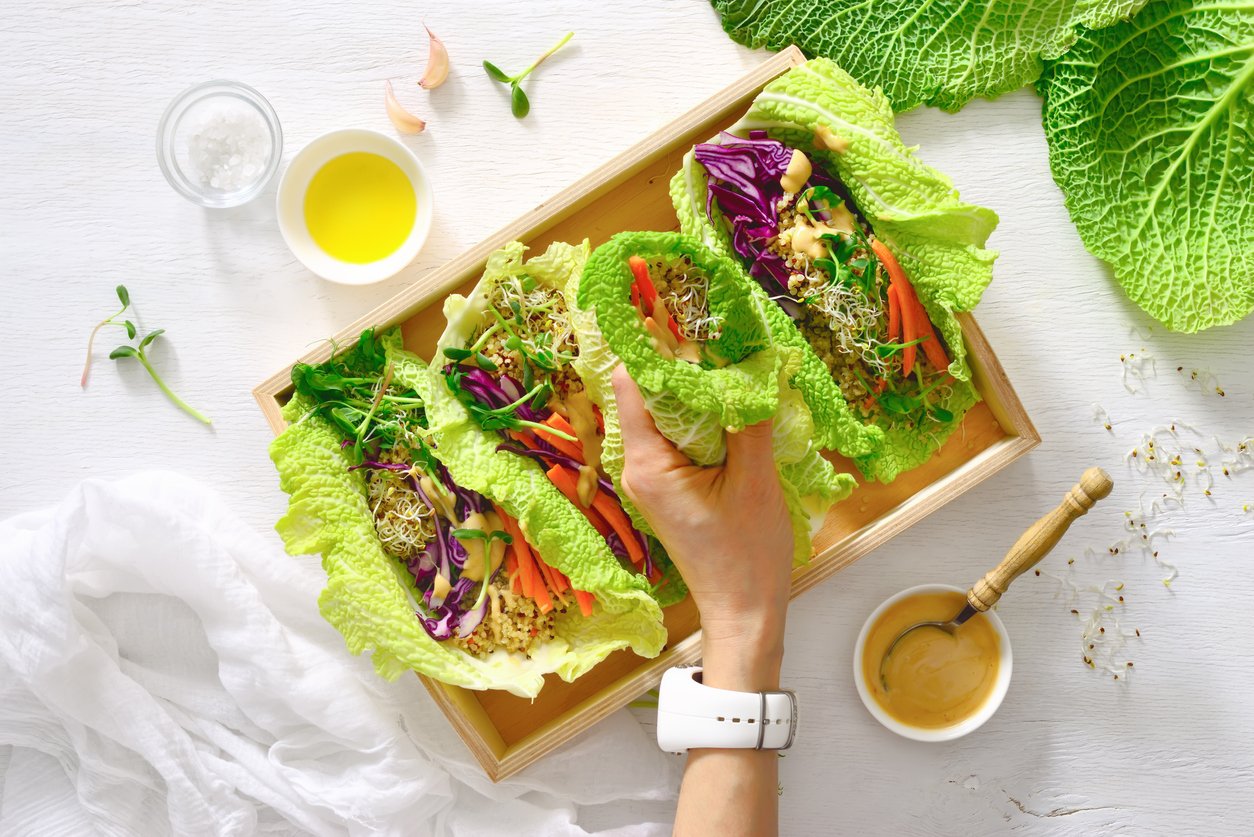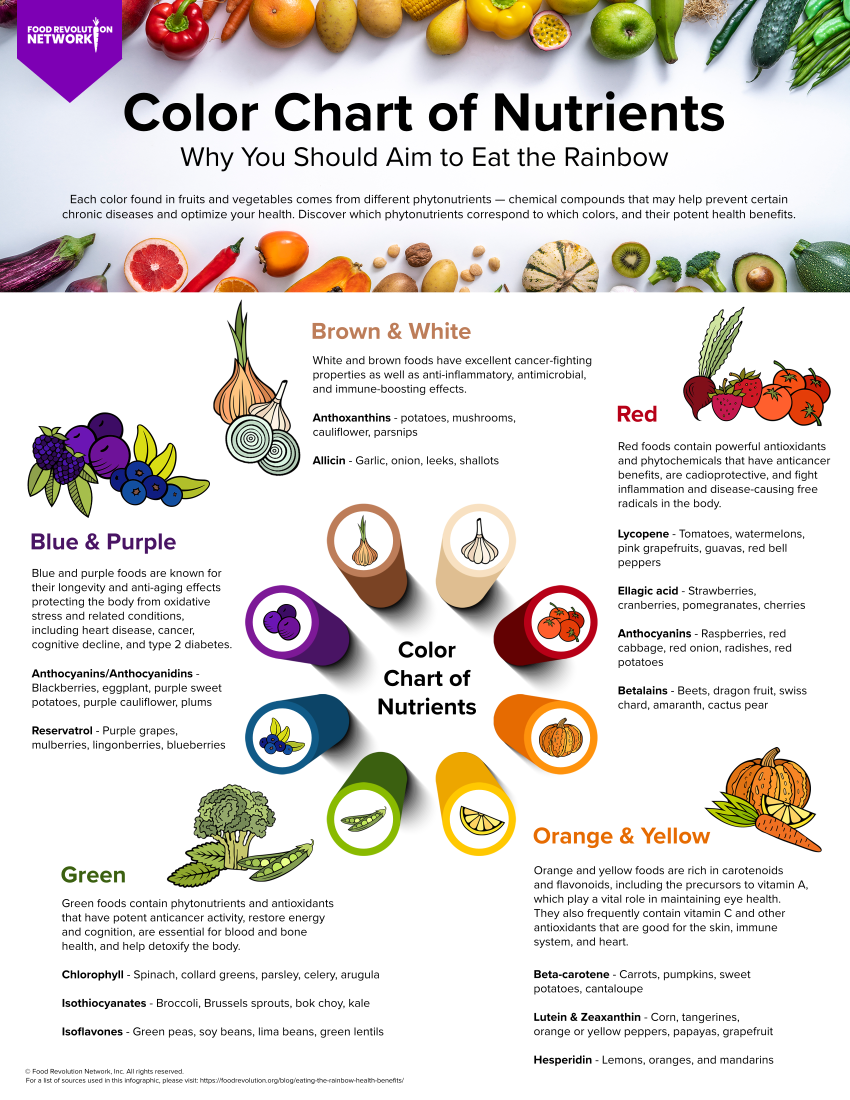“Eat the rainbow” is a fundamental healthy eating tip. (And no, we don’t mean artificially colored foods like Skittles or M&Ms!)
But what does it mean? Why is it important to get a variety of colorful fruits and vegetables in your diet?
You may be tempted to find a few foods you or your kids or family members like and focus on eating those. And it can be easy to fall into routines. But the truth is: Our bodies thrive on variety — a rainbow of nutrients.
In fact, the variety of vitamins, minerals, antioxidants, and phytochemicals in fruits and vegetables may be more powerful for your health than any pill.
Eating a diversity of colorful foods can be an easy way to get the complete range of nutrients your body needs to thrive.
Eating the Rainbow Is Important for Everyone — Kids and Adults!
A varied, balanced diet gives your body the nutrition it needs to work properly. And without good nutrition, your body will be more likely to suffer from disease, illness, and poor performance.
Advice to eat the rainbow is often used with kids. And while kids especially need a diversity of foods in their diets, so do adults.
Why Are Fruits and Vegetables Full of so Many Colors?

Each color in fruits and vegetables is created by specific phytonutrients, which are natural compounds that help protect plants from germs, bugs, the sun, and other threats.
And each color indicates an abundance of specific nutrients.
Phytonutrients aren’t essential to keep you alive (unlike vitamins and minerals). But they may help prevent certain lifestyle diseases and keep your body working as it should.
Most Americans Aren’t Getting the Range of Colorful Foods They Need
A 2015 Morbidity and Mortality Weekly Report from the CDC states that “the percentage of the adult population meeting fruit and vegetable intake recommendation is low. In 2013, 13.1% of respondents met fruit intake recommendations and 8.9% met vegetable recommendations.”
And, according to an older 2009 report about phytonutrients, 8 out of 10 people in the US are falling short in virtually every color category of phytonutrients.
Based on the report:
- 69% of Americans are falling short in green phytonutrients
- 78% of Americans are falling short in red phytonutrients
- 86% of Americans are falling short in white phytonutrients
- 88% of Americans are falling short in purple and blue phytonutrients
- 79% of Americans are falling short in yellow and orange phytonutrients
Here is a helpful rainbow food chart that you can share or print at home.
Tips to Help You Eat the Rainbow Every Day

Now you hopefully see why eating a variety of colorful foods is good for your health. But how do you make that happen? Here are some tips you can use when creating your meals:
- Eat a beautiful breakfast. Instead of drab bagels, eggs, or yogurt, start your day with a green smoothie, oatmeal topped with red berries, or a tofu scramble filled with red peppers, mushrooms, carrots, or other colorful veggies.
- Enjoy exciting salads. Large, colorful salads topped with beans and a diverse selection of vegetables are the perfect way to incorporate lots of colorful veggies (and fruits!) into your diet. Eat them for lunch or dinner. And try to have at least one per day.
- Liven up your lunch. Veggie sandwiches and wraps (including lettuce wraps) and soups, stews, and chili can help you get a balanced selection of colorful foods for lunch.
- Make vegetables the main dish. Try new recipes for dishes, such as tempeh vegetable stir-fries, vegetable curries, and Buddha bowls.
- Make a rainbow meal. Try creating a meal that uses every color — red, orange, yellow, green, blue, purple, white, and brown. (If you have kids, they will love this idea.)
Source: Food Revolution Network, edited

